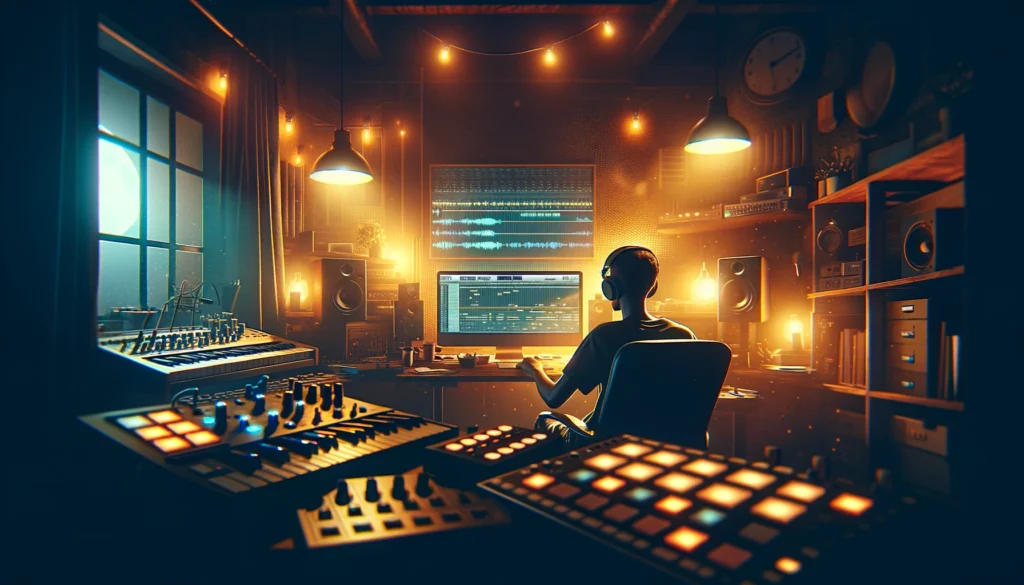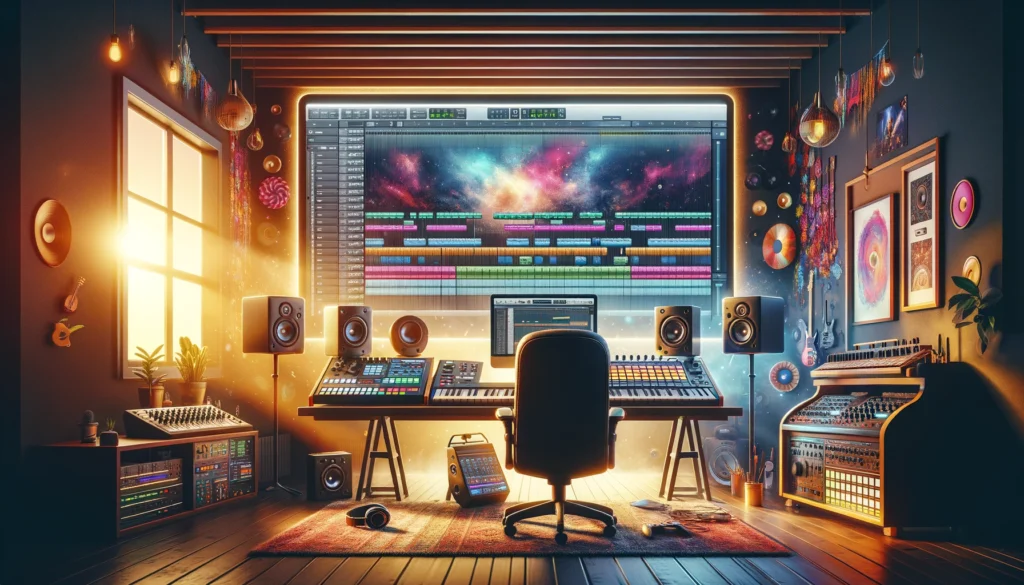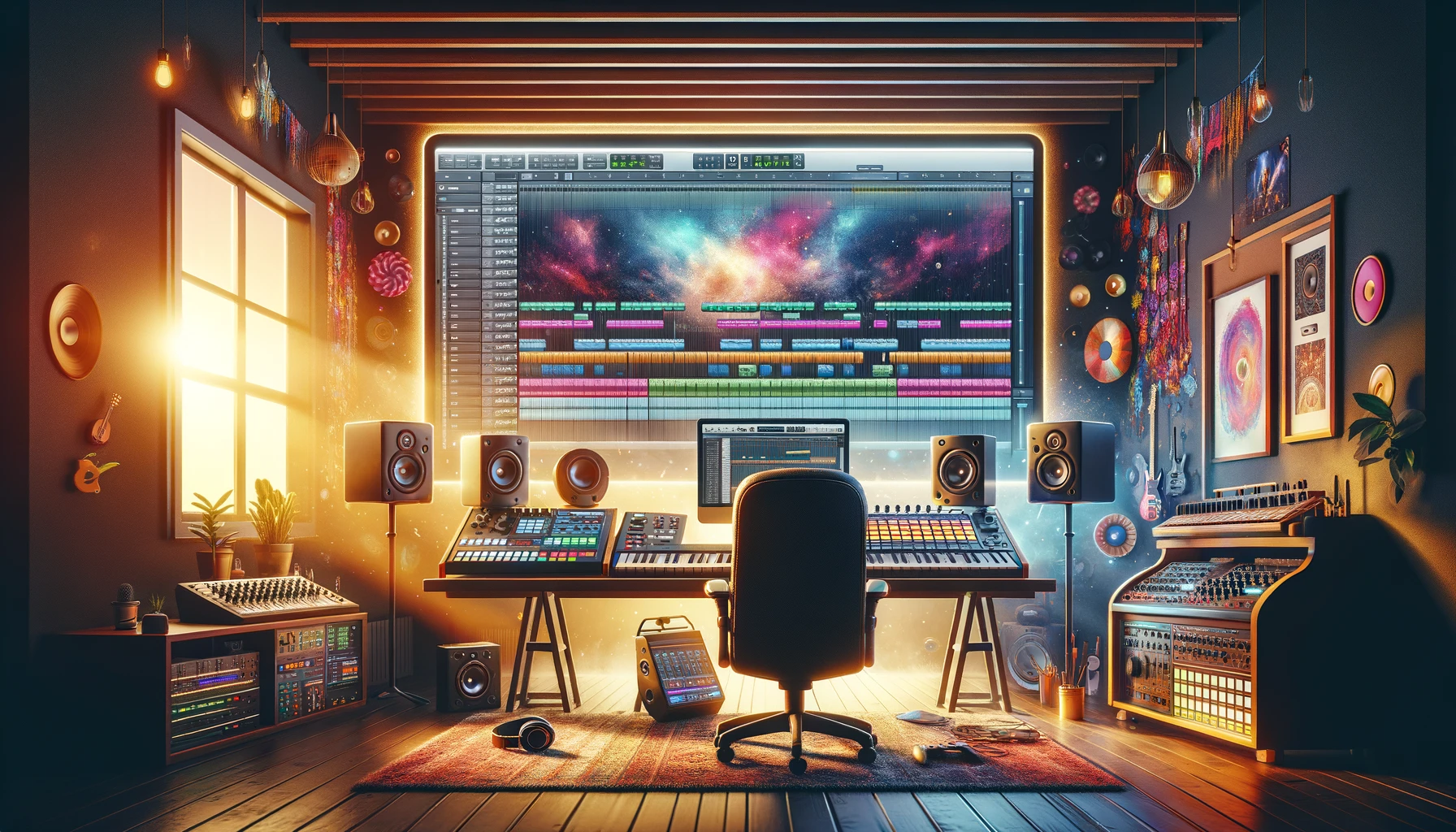Making Your First Beats with Software and Drum Machines
Embarking on the journey of creating beats can be an exhilarating experience, merging the realms of technology and creativity into a symphony of your own making. Whether you’re aspiring to produce hip-hop, electronic music, or any genre in between, the modern era offers an abundance of tools right at your fingertips. From the comfort of your home, you can dive into the world of beat making, using software and drum machines to bring your musical visions to life. This article aims to guide beginners through the initial steps of beat production, highlighting essential software choices, drum machine basics, and practical tips to kickstart your beat-making adventure.
Software Choices: The Foundation of Beat Making

Creating beats from the comfort of your home studio begins with selecting the right software. The digital audio workstation (DAW) serves as the backbone of your production setup, offering a comprehensive toolset for recording, editing, mixing, and arranging your music. With numerous options available, choosing a DAW that aligns with your workflow and musical aspirations is crucial. Here are some key considerations to help guide your selection:
User-Friendliness
Beginners should seek software that offers an intuitive interface and straightforward functionality. DAWs like FL Studio and GarageBand are renowned for their user-friendly designs, making them ideal for those taking their first steps into beat making.
Features and Flexibility
Consider the features you need. Do you require advanced sampling capabilities, a vast library of sounds, or perhaps MIDI controller integration? DAWs such as Ableton Live and Logic Pro offer extensive features that cater to both beginners and seasoned producers.
Compatibility
Ensure the software is compatible with your computer’s operating system. Most DAWs are available for Windows and macOS, but Linux users may need to look for specific software like Ardour.
Budget
Your budget plays a significant role in your choice. While some DAWs offer free versions with limited features, such as the introductory version of Ableton Live, others require a one-time purchase or subscription, like Pro Tools. Determine what you’re willing to invest before diving in.
Community and Resources
A strong user community and availability of learning resources can be invaluable, especially when you’re starting out. Popular DAWs have vast online communities, tutorials, and forums where you can seek advice, share your music, and learn new techniques.
Starting with a DAW
Once you’ve chosen your DAW, familiarize yourself with its layout and functionalities. Start by exploring the built-in tutorials or online guides specific to your software. Experiment with the built-in sounds and plugins to understand the basics of track creation, MIDI programming, and audio editing. Remember, the goal is to get comfortable with the software and start expressing your musical ideas, no matter how simple they may be initially.
| DAW | Compatibility | User-Friendliness | Features | Budget |
|---|---|---|---|---|
| FL Studio | Windows, macOS | High | Extensive for electronic music and beat making | Paid, with different versions |
| GarageBand | macOS | Very High | Great for beginners and Apple users | Free (with Apple devices) |
| Ableton Live | Windows, macOS | Moderate to High | Advanced sampling, MIDI integration, live performance | Paid, with Intro, Standard, and Suite versions |
| Logic Pro | macOS | High | Professional-grade production, exclusive to Apple | Paid |
| Pro Tools | Windows, macOS | Moderate | Industry standard, extensive editing and mixing tools | Subscription or perpetual license |
| Ardour | Linux, Windows, macOS | Moderate | Open source, flexible for recording and editing | Free, open source |
Choosing the right software is the first step in your beat-making journey, setting the foundation for your creative expression. With the right tools at your disposal, you’re well on your way to producing beats that reflect your unique musical style and vision.
Drum Machines: Crafting the Heartbeat of Your Beats

In the vast universe of beat making, drum machines stand as the cornerstone, shaping the very pulse of your creations. These indispensable tools, whether physical hardware or software plugins, are not just instruments; they are the architects of rhythm, painting the temporal canvas upon which your musical ideas come to life.
The Beat Makers’ Arsenal
Drum machines have evolved from their rudimentary beginnings into sophisticated devices capable of intricate patterns and nuanced sound design. Modern beatmakers have a plethora of options, from the legendary Roland TR-808, which defined the sound of entire musical genres, to software-based solutions like Native Instruments’ Maschine, offering seamless integration with digital audio workstations (DAWs).
Choosing Your Drum Machine
Selecting the right drum machine is akin to choosing a brush for a canvas; it’s a deeply personal decision that influences your creative output. Consider the following when making your choice:
- Sound Palette: Are you looking for classic analog sounds that harken back to the 80s hip-hop, or do you prefer a modern, digital sound library that spans various genres?
- Integration: How well does it integrate with your existing setup? If you’re heavily invested in a DAW, a software drum machine or a hardware option with MIDI connectivity might be preferable.
- Workflow: Each drum machine offers a unique workflow. Hardware options might appeal to those who prefer a tactile, hands-on approach, while software options offer versatility and ease of editing.
- Budget: Your budget will significantly influence your choice. Hardware can be expensive, but it’s also a long-term investment in your sound. Software options might offer more flexibility and a lower entry cost.
Incorporating Drum Machines into Your Workflow
Once you’ve selected your drum machine, it’s time to weave it into the fabric of your music. Here are some tips to get the most out of your new tool:
- Start Simple: Begin with basic patterns and get to know the unique characteristics of your machine. Even the most basic rhythms can form the backbone of a compelling track.
- Layer Sounds: Don’t hesitate to layer different sounds and textures. This can add depth and complexity to your beats, making them more engaging.
- Experiment with Effects: Many drum machines come with built-in effects. Experimenting with these can transform a standard beat into something truly unique.
- Integrate with Your DAW: If your drum machine is hardware, look into how it can be MIDI-mapped to your DAW. This integration can streamline your workflow and open up new creative possibilities.
In the beat-making journey, drum machines are more than just tools; they’re the companions that accompany you on your creative explorations, offering a bridge between the technical and the expressive. As you delve deeper into the world of rhythm and beats, remember that these machines are not just about the sounds they produce but the stories they enable you to tell.
Practical Tips to Kickstart Your Beat-Making Adventure
Embarking on a beat-making journey can feel like navigating uncharted waters, but with the right approach, it quickly turns into an exhilarating voyage of discovery. Here are some practical tips to help you set sail:
1. Familiarize Yourself with the Basics
Start by understanding the fundamental elements of a beat: kick, snare, hi-hats, and bass. Listen to a variety of music and try to identify these components. This foundational knowledge will serve as your guide in creating your own beats.
2. Create a Comfortable Workspace
Your environment significantly influences your creative process. Set up a workspace that inspires you, ensuring your equipment is easily accessible and you’re comfortable. Whether it’s a corner of your room or a dedicated studio space, make it yours.
3. Dive into Tutorials and Online Courses
There’s a wealth of knowledge available online. From YouTube tutorials to comprehensive online courses, take advantage of these resources to learn your DAW, understand drum machine intricacies, and pick up production techniques.
4. Experiment Without Fear
Experimentation is the heart of creativity. Don’t be afraid to try out different sounds, patterns, or effects, even if they seem unconventional. Sometimes, the most unique and memorable beats come from the most unexpected experiments.
5. Learn Basic Music Theory
A basic understanding of music theory can significantly enhance your beat making. Knowing about keys, scales, and chords helps in creating harmonious beats and integrating them with other musical elements.
6. Collaborate with Others
Collaboration can be a powerful way to learn and grow as a beat maker. Working with others can introduce you to new techniques, styles, and ways of thinking about music.
7. Stay Organized
Keep your projects, samples, and files organized. A systematic approach to your work can save you time and frustration, allowing you to focus on creativity.
8. Set Realistic Goals
Set achievable goals for your beat-making journey. Whether it’s finishing a beat a week or mastering a new technique each month, having clear objectives keeps you motivated and focused.
9. Seek Feedback
Don’t hesitate to share your beats with friends, family, or online communities. Constructive feedback is invaluable for growth and improvement.
10. Stay Inspired
Finally, keep your inspiration alive. Attend live music events, explore new genres, and listen to your favorite producers. Inspiration is the fuel for your creative fire.
Remember, beat making is as much about the journey as it is about the destination. Embrace the learning curve, celebrate your progress, and most importantly, enjoy the process of creating music.

As you embark on your beat-making adventure, remember that every great producer started somewhere. The journey from novice to master is paved with experimentation, learning, and, above all, a passion for music. Whether you’re tweaking knobs on a drum machine, crafting melodies in your DAW, or finding inspiration in the world around you, the path to creating compelling beats is uniquely yours.
In this rapidly evolving field, staying curious and open-minded is key. Embrace new technologies, explore different genres, and never shy away from pushing your creative boundaries. The beauty of beat making lies in its endless possibilities—each beat a reflection of your individuality and artistic expression.
Remember, the tools and tips provided here are just the beginning. As you grow and evolve, your techniques, preferences, and musical style will too. The most important thing is to keep creating, experimenting, and finding joy in every beat you make.
Let these words be the kick drum that propels you forward, the snare that snaps you into action, and the melody that guides you on your creative journey. Your beat-making odyssey is just getting started, and the world is eager to hear your sound.










